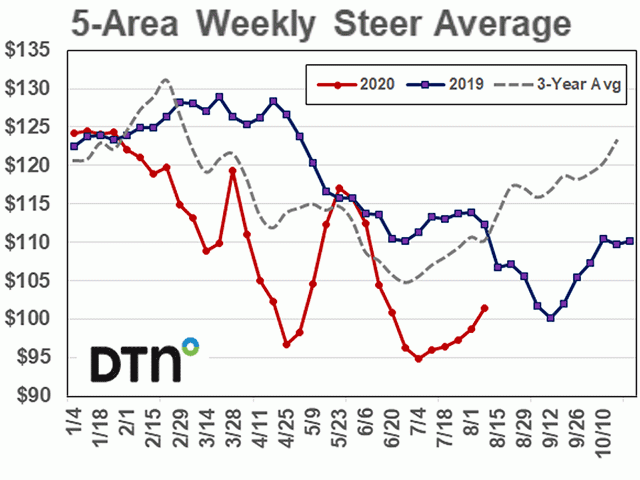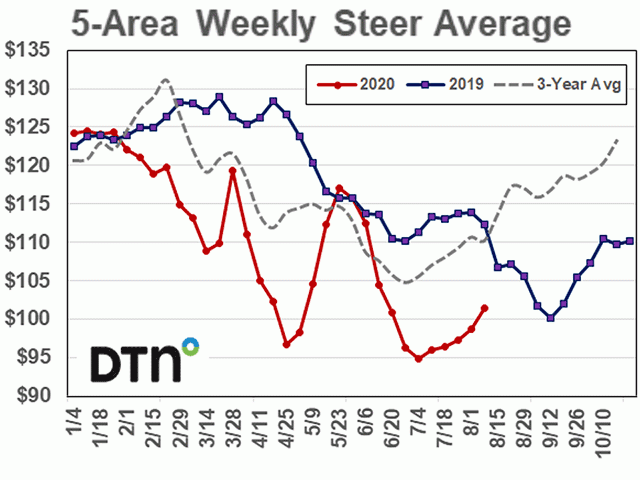Sort & Cull
Do Seasonal Trends Matter in 2020 Cattle Markets?
Cash cattle prices moved higher during each of the last five weeks and momentum really started to build in early August. The first full week of August posted the most significant weekly gain since the middle of May. It appears a seasonal low was set the first week of July with average cash cattle price hovering at $95 per cwt; now we have inched our way above $100 per cwt and hopefully will show renewed support through the upcoming weeks.
Compared to the 3-year average, 2020 cash cattle prices continue significantly lower. But now past the bulk of packer plant slowdowns, the cash price trend is surprisingly reconnecting with the general market trend and seasonal price direction.
The 3-year average price hit a seasonal bottom the last week in June (one week earlier than 2020 levels), with the initial late-summer rally ending in the middle of August, creating a $12 per cwt price swing from seasonal lows.
P[L1] D[0x0] M[300x250] OOP[F] ADUNIT[] T[]
Although cash markets in 2019 were significantly hampered by the Aug. 9 fire at Tyson's Holcomb, Kansas, plant, seasonal lows developed in early September, but still posted a $10 per cwt rally before stabilizing. Although proponents can clearly argue whether or not seasonal tendencies can be a factor following the mixed-up year seen in the cattle market, the fact that the pre-Labor Day price rally is developing along the same pattern of 3-year average prices gives credibility to the idea that follow-through support may continue to be seen ahead of the upcoming holiday.
During this year no one has to be told that previous results are not an indicator of future performance, but if the late-summer rally holds, a potential $10 to $12 per cwt move higher in cash trade could develop. This type of move would take prices near or slightly above $105 per cwt, which is well below average price level, and still likely to hold well below futures prices through the early fall months, continuing the weak basis levels of summer.
With increased uncertainty surrounding beef demand growth due to COVID-19 restrictions and limited activities combined with uneven market-ready cattle supplies through the end of the year, prices may continue to significantly lag previous levels. The key through the end of the year will be to help maintain the current gains and keep the market trend moving steady to higher over the coming months.
With uncertainty still very evident in cattle markets ahead of Labor Day, the growing bullishness in cash cattle is encouraging following recent turmoil. The market is expected to continue to see challenges through the rest of the year, which could curb price support in the fourth quarter.
The "5-area weekly steer average chart" accompanying this article is a cattle market chart posted on DTN to give customers a quick and clear view of current cash cattle markets compared with historical prices.
Rick Kment can be reached at rick.kment@dtn.com
© (c) Copyright 2020 DTN, LLC. All rights reserved.





Comments
To comment, please Log In or Join our Community .